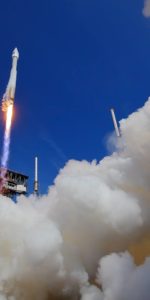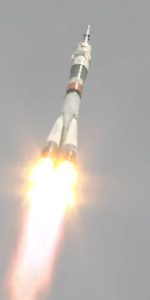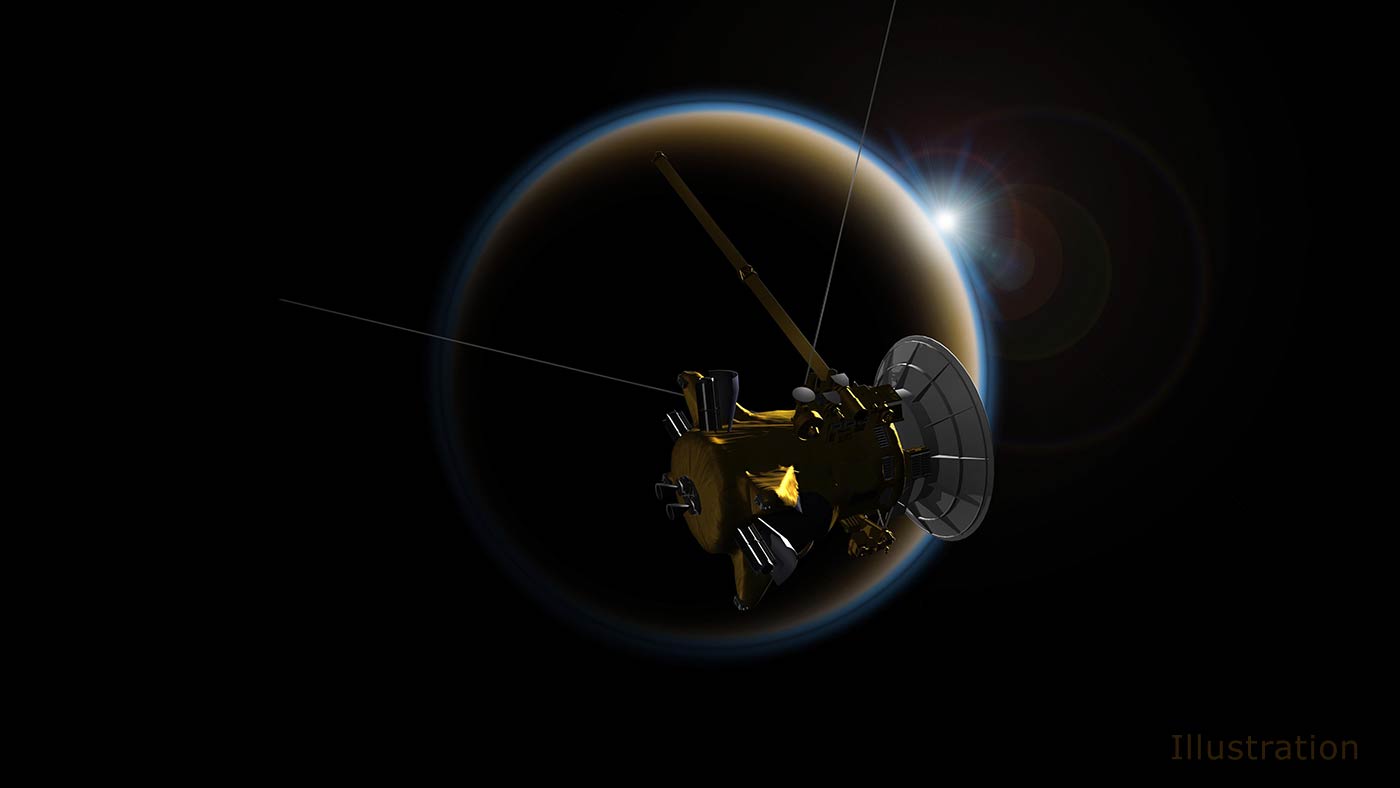
This week marks another important milestone in the Cassini mission at Saturn – as of today, the spacecraft is conducting the last Ring-Grazing Orbit of its mission as it prepares for the Grand Finale, which will culminate in the death of the probe on Sept. 15. On April 21, Cassini will do its very last close flyby of Saturn’s largest moon Titan. Speaking of Titan, Cassini has also apparently solved a perplexing mystery; the unusual “magic island” formations seen in one of the moon’s methane/ethane seas are now thought to be caused by nitrogen bubbles fizzing periodically on the sea’s surface.
The Ring-Grazing Orbits phase began last Nov. 30, and consisted of 20 orbits which passed very close to the outer edge of Saturn’s rings. This presented a unique opportunity to study the composition of the rings as never before and send back the most detailed images of the rings from any spacecraft. Saturn’s northern hemisphere, including the famous “hexagon” jet stream, was also imaged in incredible detail.
“This is it, the beginning of the end of our historic exploration of Saturn. Let these images – and those to come – remind you that we’ve lived a bold and daring adventure around the Solar System’s most magnificent planet,” said Carolyn Porco, Cassini imaging team lead at Space Science Institute in Boulder, Colo.
“We’re calling this phase of the mission Cassini’s Ring-Grazing Orbits, because we’ll be skimming past the outer edge of the rings,” said Linda Spilker, Cassini project scientist at NASA’s Jet Propulsion Laboratory in Pasadena, Calif. “In addition, we have two instruments that can sample particles and gases as we cross the ring plane, so in a sense Cassini is also ‘grazing’ on the rings.”
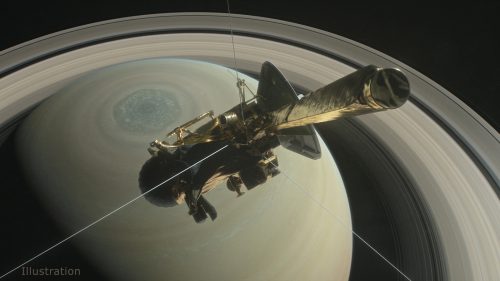
Now, Cassini is leaving the Ring-Grazing Orbits phase of the mission and entering the Grand Finale. Between now and Sept. 15, the spacecraft will conduct a series of 22 final orbits which pass between the innermost rings and the planet itself, something never done before. The final orbit will see Cassini plunge, on purpose, into Saturn’s atmosphere after it runs out of fuel. It will be a sad ending for an amazing mission which has captured the hearts and minds of many people and revealed the Saturnian system for the incredible variety of worlds that it is.
“No spacecraft has ever gone through the unique region that we’ll attempt to boldly cross 22 times,” said Thomas Zurbuchen, associate administrator for the Science Mission Directorate at NASA Headquarters in Washington. “What we learn from Cassini’s daring final orbits will further our understanding of how giant planets, and planetary systems everywhere, form and evolve. This is truly discovery in action to the very end.”
NASA chose to dive-bomb Saturn as a way to end the mission so that Cassini would not end up drifting aimlessly and possibly collide with one of the moons, especially Titan or Enceladus, where any stray microbes on the spacecraft could perhaps contaminate them. Both moons are potentially of biological interest to scientists, so such contamination needs to be avoided at all costs.
“This planned conclusion for Cassini’s journey was far and away the preferred choice for the mission’s scientists,” said Spilker. “Cassini will make some of its most extraordinary observations at the end of its long life.”
Well before this, however, Cassini will conduct its last close flyby of Titan on April 21 at 11:08 p.m. PDT (2:08 a.m. EDT April 22). At its closest, Cassini will pass 608 miles (979 kilometers) above Titan’s surface at a speed of about 13,000 mph (21,000 kph). Cassini will then use Titan’s gravity to help move it into the Grand Finale orbits. This will be the 127th flyby of Titan; Cassini has been busy exploring this bizarre world ever since it first arrived at Saturn in 2004. Titan is the only other body in the Solar System known to have liquid on its surface, in this case rivers, lakes and seas of liquid methane/ethane. It even rains methane on Titan.
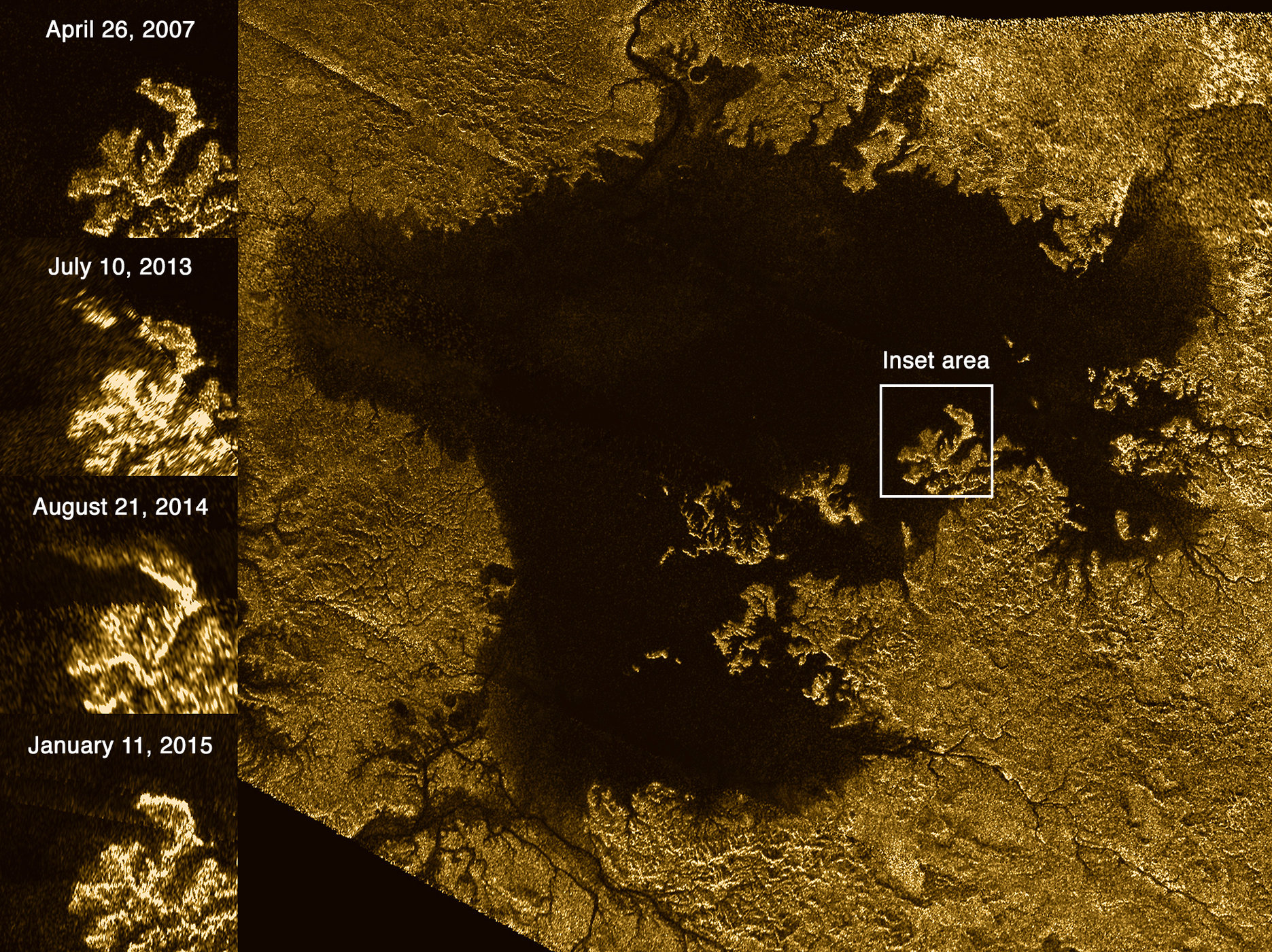
Cassini has also recently tentatively solved an intriguing mystery on Titan – unusual patches seen on one of the methane/ethane seas, Ligeia Mare, called “magic islands,” which would appear and then disappear again. Theories varied, but from the observations, scientists now think that the phenomenon is caused by nitrogen bubbles foaming on the surface before vanishing again. The patches of bubbles make their way to the surface and then fizz on top. A study of condition in the seas found that pressures and temperatures in the depths might make the mix of methane, ethane and nitrogen unstable, causing nitrogen bubbles to rise to the surface. The bubbles are estimated to be up to over an inch in size and form at a depth of about 330 to 660 feet (100 to 200 meters). On the surface, the bubbles look like bright patches to Cassini’s radar, which is used to see through the thick, hazy nitrogen atmosphere.
“The surface looks very calm, at least in the light of RADAR observations, and from time to time we have streams of big bubbles a few centimeters in diameter reaching the surface,” said Daniel Cordier, the lead study author, in an interview with CNN.
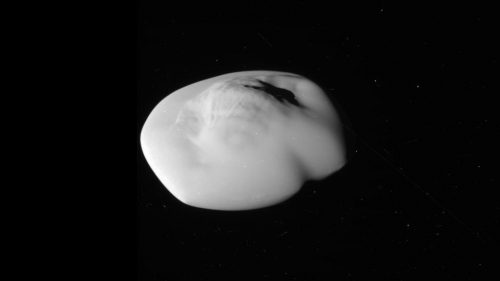
From the paper:
“Titan, Saturn’s largest moon, is the only extraterrestrial body known to support stable liquid on its surface, in the form of seas and lakes that dot the polar regions. Many indications suggest that the liquid should be composed of a mixture of nitrogen, methane and ethane. Recent observations by Cassini’s Radio Detection and Ranging (RADAR) instrument of Titan’s large sea, called Ligeia Mare, have shown unexplained and ephemeral bright features, possibly due to rising bubbles. Here we report that our numerical model, when combined with experimental data found in the literature, shows that Ligeia Mare’s bed is a favour able place for nitrogen exsolution. This process could produce centimetre-sized and RADAR-detectable bubbles.”
As also noted in Space.com, “The physical process behind this strange behavior was, up to now, absolutely not understood,” said study lead author Daniel Cordier, a planetary scientist at the University of Reims Champagne-Ardenne in France.
The new paper detailing these findings is available at Nature Astronomy.
On Titan it is so cold, -290 degrees Fahrenheit, that water ice is as hard as rock. Methane and ethane, however, are liquid at those temperatures. Titan is also thought to have a subsurface ocean of water, like another Saturn moon, Enceladus, but the conditions are unknown as to whether that ocean could be favorable to life.
“Contrary to the case of Enceladus where active geysers are well observed, there are only a few cryovolcano candidates at the surface of Titan, and there is really no convincing evidence of their activity,” Cordier said. “Titan’s internal water ocean may be similar to that of Europa or Enceladus, but the existence of a form of life in these oceans belongs, for the moment, to the domain of science fiction.”
Enceladus was also in the news again last week, with findings from Cassini confirming evidence for hydrothermal activity on the floor of the subsurface ocean. An abundant amount of hydrogen was found in the moon’s water vapor plumes, an indicator of this activity, and also a possible food source for any microscopic life in that ocean. Cassini can’t detect life itself, so that possibility will have to wait for a subsequent mission.
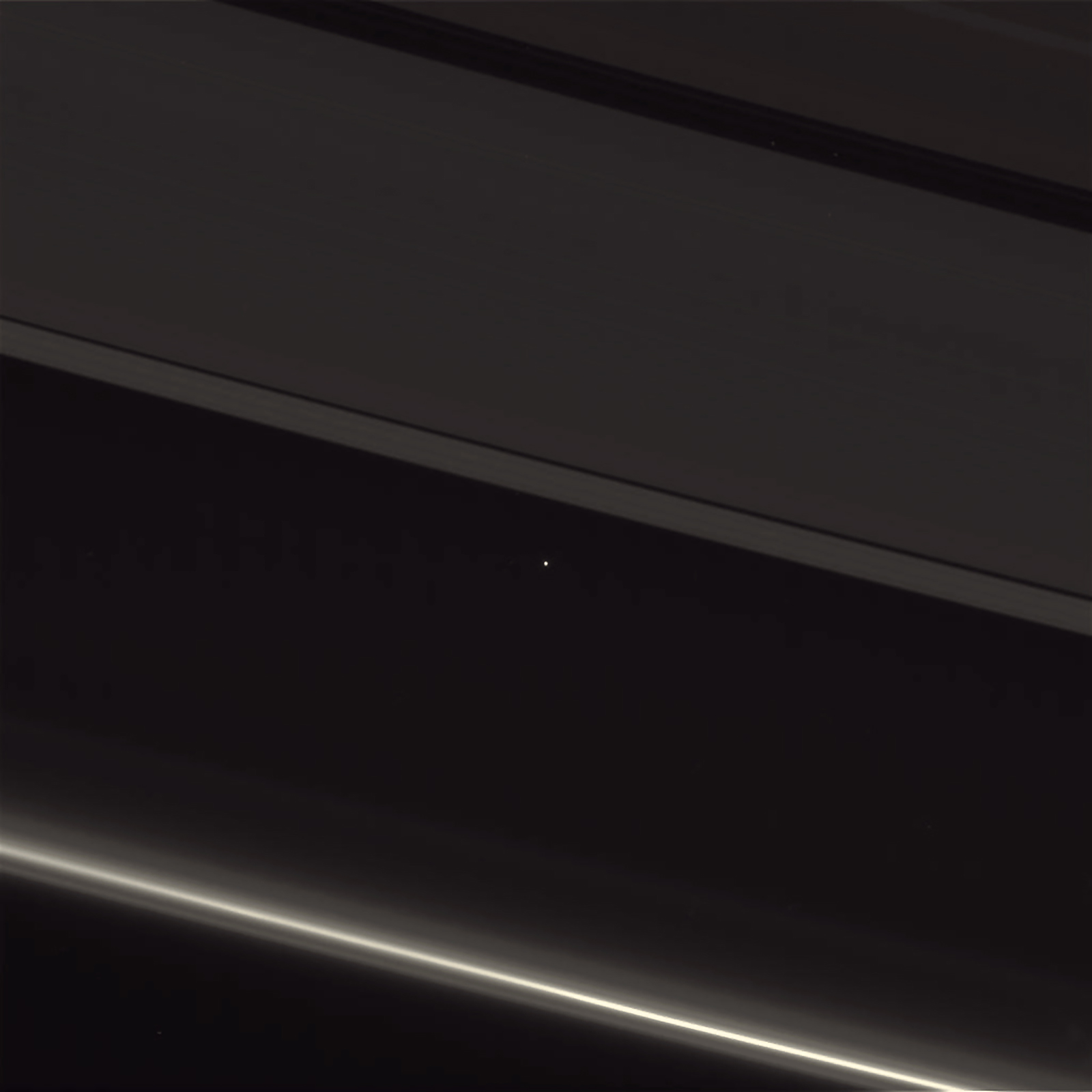
“This is the closest we’ve come, so far, to identifying a place with some of the ingredients needed for a habitable environment,” said Zurbuchen. ”These results demonstrate the interconnected nature of NASA’s science missions that are getting us closer to answering whether we are indeed alone or not.”
As Spilker also noted, “Confirmation that the chemical energy for life exists within the ocean of a small moon of Saturn is an important milestone in our search for habitable worlds beyond Earth.”
Cassini also recently took new close-up images of two other tiny moons, Pan and Atlas, which orbit within and close to the edges of, the rings. Both have an unusual “ravioli” or “flying saucer” kind of shape, with a roughly rounded body and a large, smooth ridge circling the equator of each moon. The ridges are thought to be composed of ring material which has coalesced on the moons’ surfaces.
Our own planet also made an appearance again, as Cassini took new images showing distant Earth though gaps in the rings. At Saturn’s distance, Earth just looks like a tiny bright speck among the other stars. It’s a humbling view, to say the least.
More information about the Grand Finale phase of the mission is here. All of Cassini’s raw images can be seen here on the mission website, and more information about the Cassini mission itself is available here.
Be sure to “LIKE” AmericaSpace on Facebook and follow us on Instagram & Twitter!




